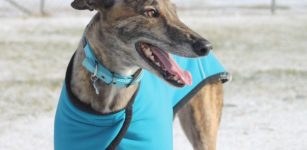Greyhound Trainers May Face Charges Over Mass Slaughter

By Blake O’Connor and Ugur Nedim
We previously reported on the cruel practice of ‘live baiting’ in the greyhound industry, and the NSW government’s recent decision to ban greyhound racing across the state.
Now, an independent report into the treatment of ‘underperforming’ greyhounds has revealed shocking evidence of mass slaughter.
The report, by Senior Counsel Clive Steirn, found that ‘at least 99 greyhounds were brutally killed at a Hunter Valley property and buried in a mass grave over a four-year period because they were underperforming and therefore of no future use’.
The inquiry examined autopsy reports and other evidence, finding that most of the animals were killed for reasons not associated with any legitimate medical concern. It found that the ‘vast majority of the remains showed no sign of any other injury’, besides wounds consistent with either a gunshot or blunt instrument trauma to the back of the head.
The report represents another page in a very grim chapter in the life of Australian greyhound racing, and has been referred to police to determine whether charges should be laid against those implicated.
Animal Cruelty
The Prevention of Cruelty to Animals Act 1979 (NSW) (‘the Act’) contains a range of offences designed to punish those who mistreat animals.
Section 5 makes it an offence to commit “an act of cruelty” upon an animal. The maximum penalty is 6 months imprisonment and/or a fine of $5,500 for an individual, or a $27,500 for a corporation.
Section 4 defines “cruelty” as including any beating, kicking, wounding of an animal, exposure to excessive heat or cold or inflicting pain on an animal.
It is also an offence to authorise another person to commit an act of cruelty on an animal that you own, or are in charge of.
Cruelty also includes failing to take reasonable care of an animal, or to take reasonable steps to alleviate pain or suffering, or to provide necessary veterinary treatment.
Section 6 relates to “aggravated cruelty”, which is defined by section 4 as:
(a) causing the death, deformity or serious disablement of the animal, or
(b) the animal being so severely injured, so diseased or in such a physical condition that it is cruel to keep it alive.
The maximum penalty for that offence is 2 years imprisonment and/or a fine of up to $22, 000 for individuals, or $110, 000 for corporations.
Section 530 of the Crimes Act 1900 (NSW) contains an additional offence of “serious animal cruelty” which includes torturing, beating or killing an animal. That offence comes with a maximum prison term of 5 years.
Exporting Greyhounds
Being slaughtered is not the only fate for underperforming greyhounds. Some unscrupulous operators have taken to exporting dogs to countries like Macau.
Animals Australia campaign director Lyn White describes the conditions for greyhounds in Macau as ‘abhorrent’ and a ‘death sentence’. She says this is reflected in fact that almost all dogs are ultimately killed for ‘failing to make the cut’.
Other Live Exports
Sadly, animal cruelty is not just limited to Greyhound racing. The live export of cattle is an example of systematic abuse and cruelty.
A Four Corners report in 2011 titled ‘Bloody Business’ highlighted the shocking cruelty endured by cattle exported to Indonesia and other parts of the globe. The treatment included being transported for long periods of time in cramped and confined conditions before being subjected to an horrific death on arrival.
It seems this practice may still be occurring after a well-respected veterinarian was dismissed for presenting evidence of cruelty and appalling conditions aboard live export ships departing from Australia.
Such practices have many concerned for the welfare of our vulnerable fellow animals, and animal welfare groups fighting for change.
But with the enormous economic benefits of live exports, and the potential political repercussions of suspensions and bans, it may be some time before the practice meets the same fate as greyhound racing.






